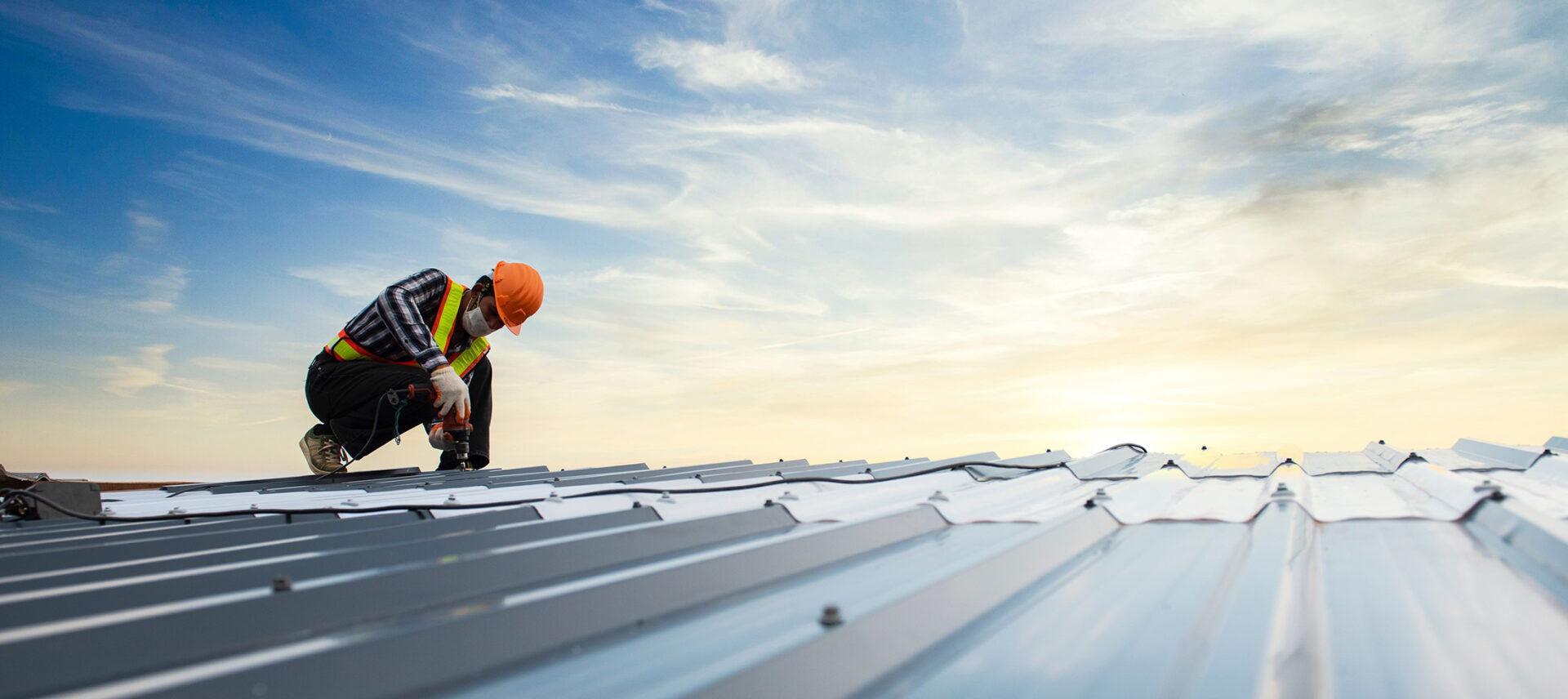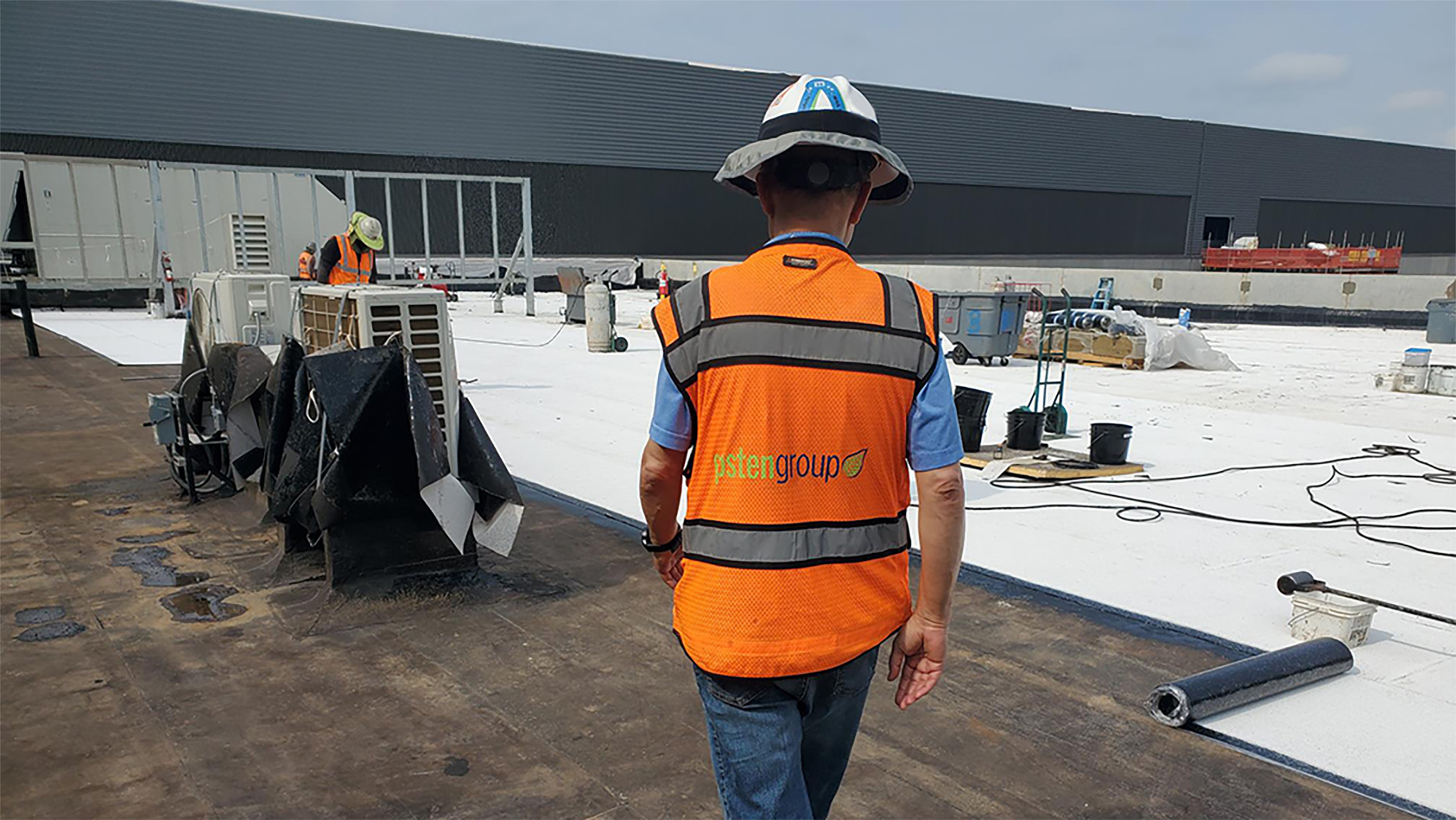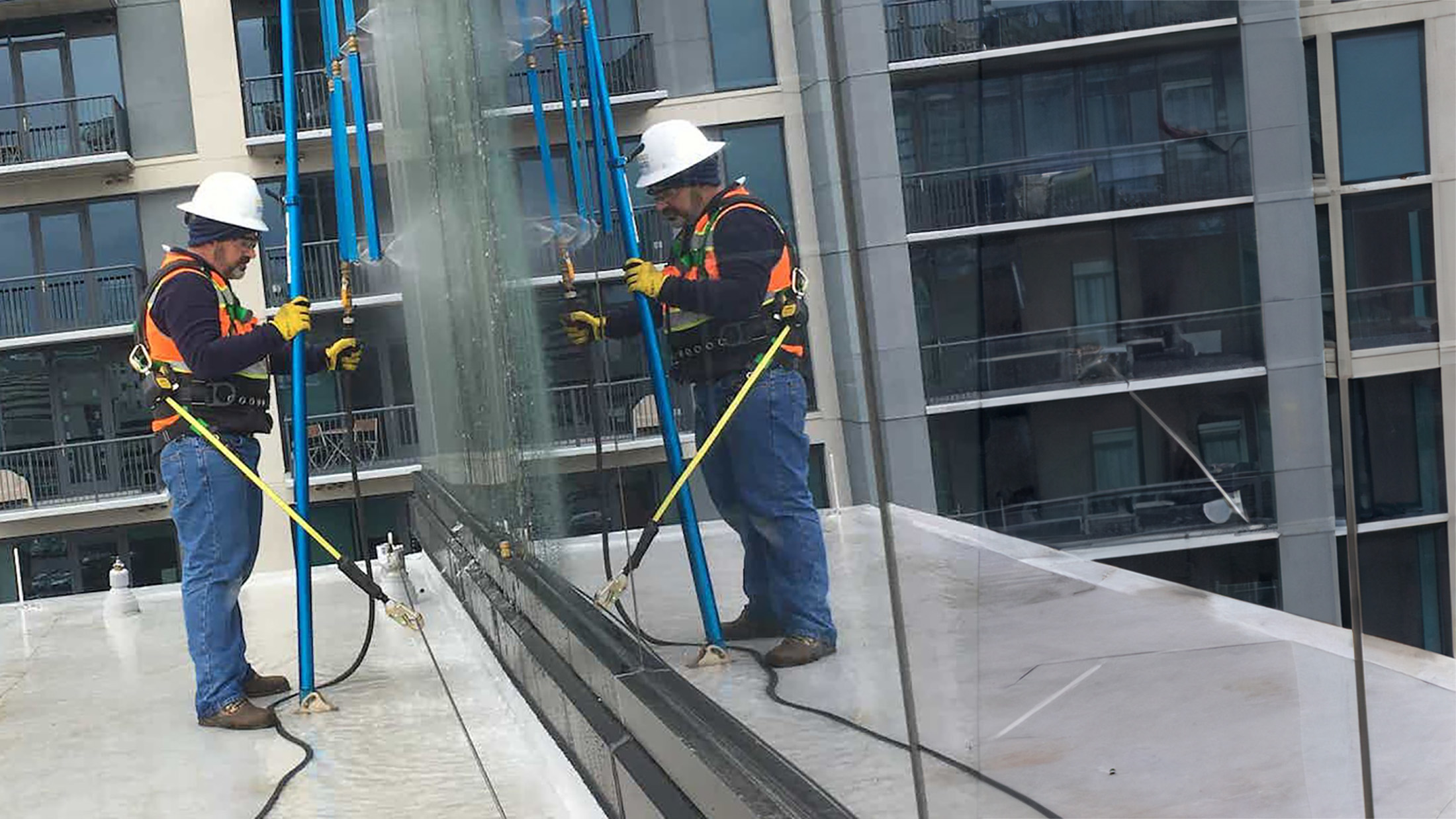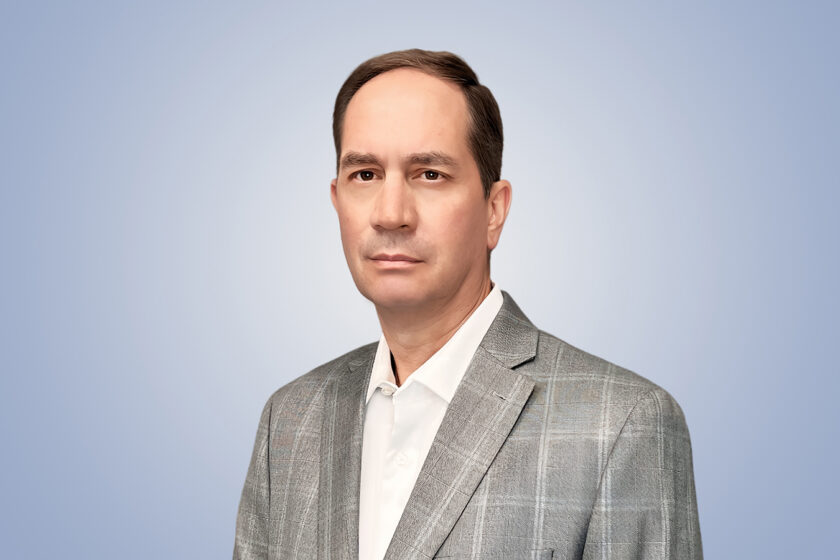News & Insights
Exploring the latest innovations in roofing and waterproofing technology: implications for building owners and architects
Explore the recent advances in roofing and waterproofing including the materials and innovative practices that are enhancing protection against common building envelope issues; technologies to watch for the future; and the implications for owners and architects.

Traditional roofing and waterproofing methods, such as asphalt shingles and built-up roofing, have long been valued for their reliable performance and durability over time. Yet, shifts like supply chain disruptions, a heightened focus on energy efficiency, and the increased frequency of extreme weather events are driving advancements in these disciplines.
This article will examine the key drivers, materials, and innovative practices that are enhancing protection against common building envelope issues; technologies to watch for the future; and the implications for owners and architects.
Advancements in roofing through supply chain disruption
Project schedules have been and continue to be impacted since the pandemic, with labor shortages and the procurement of materials like roof insulation becoming more of a challenge. These disruptions have led teams to get creative, especially when dealing with large high-performance projects like data centers and hospitals.
In response to logistical challenges, construction teams have begun using secondary roof membranes as temporary measures. These allow teams to temporarily dry-in the building so other construction activities can proceed while waiting for roofing materials to arrive. Another benefit is the owner winds up with an additional layer of waterproofing to protect their investment since the base layer often stays in place.
Prefabricated construction is also gaining traction since manufacturing in a controlled environment can create an efficiency buffer, allowing construction to proceed on schedule even when other activities are delayed. Modular roofing systems, such as composite insulated metal panels, can be pre-assembled in factories and then shipped to construction sites, with each module providing a combination of structural roof deck load capacity, exterior aesthetic finishes, weather barrier, insulation and vapor barrier performance objectives. These modules are designed to interlock and are secured directly to the structural framing, providing excellent structural integrity against wind uplift. Other benefits include a simplified design process with less complexity, improved energy efficiency, less risk of workmanship error, and reduced installation costs.

Evolution of roofing and waterproofing in energy efficiency
Rising energy costs, a growing focus on sustainable building practices, and developments in material science have created advancements in roofing and waterproofing.
- Reflective coatings: The first significant stride toward energy-efficient roofing came with the introduction of reflective coatings. These coatings reflect solar radiation, reducing the amount of heat absorbed by the roof and subsequently lowering the building’s cooling costs.
- Cool roofing materials took reflective coatings a step further. Using specialized pigments and materials, these roofs not only reflect sunlight but also emit absorbed heat back into the atmosphere, dramatically improving the overall thermal performance of roofs.
- Green roofs: Roofs which support living vegetation are another energy-efficient roofing solution. They provide natural insulation, reduce stormwater runoff, and even absorb carbon dioxide, providing a multi-dimensional approach to energy efficiency and sustainability. The maintenance requirements for green roofs can vary widely depending on several factors, including the type of vegetation, the local climate, and the specific design of the roof. They require a consistent level of care and attention that goes beyond traditional roofing systems.
- Composite insulated metal panel systems: These systems combine multiple materials to create a composite roofing structure that is highly efficient at maintaining indoor temperatures. Insulated metal panels can be a strong solution for low-slope roofing systems with perimeter gutters and downspouts, but challenges remain in terms of adapting this approach to roofs with multiple pitches or internal drainage systems.
- Smart roofing: Recently, integrated sensor technologies have started to make their way into roofing systems. These sensors monitor temperature, humidity, and other factors in real-time, allowing for dynamic adjustments to HVAC systems. This real-time data can greatly assist in optimizing energy consumption.
- Air and vapor barriers and continuous insulation: The availability and implementation of air and vapor barrier products and insulation materials has expanded greatly in the 21st century. However, in the past, these components were rarely used consistently throughout building enclosures. Building codes have begun to adopt air and vapor barrier and continuous insulation requirements in the last 20-30 years. This means many buildings constructed before 2000 do not contain continuous air or vapor barriers and/or insulation and continue to be significant sources of undesirable air leakage, heat transfer and squandered energy resources as mechanical systems work harder to overcome these flaws. These factors should be accounted for when assessing existing portfolio performance and planning for lifecycle costs related to energy use and capital improvements.

The changing role of roofing and waterproofing for weather resilience
Roofing plays a critical role in maintaining the barrier between the controlled indoor environment and the outdoors. This separation helps manage temperature, airflow, and humidity effectively, among other performance objectives. With climates experiencing temperature swings as extreme as 80 degrees per day, pressure differentials caused by wind and stack effects, and uncomfortably high or low humidity levels, the material design must account for factors such as movement from external forces or internal expansion and contraction in order to maintain energy efficiency.
The frequency of extreme weather events, such as hurricane or tornado-force winds, trembling earthquakes, heavy snowfall and ice accumulation or scorching heat waves, is taking a toll on new construction and existing buildings. While the roofing and waterproofing industry is equipped with technology and principles to deal with these environmental stressors, current building codes and implementation of these principles often lag in accounting for the rise in extreme weather events.
Additionally, while implementing stronger, more resilient solutions can cost more upfront, these investments can pay off in the long run through reduced damage and maintenance costs. The key is to educate stakeholders about these preventive methods and their long-term benefits to encourage adoption of these advanced technologies to account for the increase in weather events.

Emerging technologies in roofing and waterproofing
Emerging technologies are exploring the use of adaptive and responsive materials. This innovation not only enhances the building’s resilience but also offers significant energy savings, aligning with broader sustainability goals. Here are some emerging technologies to keep an eye on:
- Solar roofing: Solar tiles and shingles are now designed to seamlessly integrate with the existing architecture, making it easier for buildings to generate their own electricity. Solar roofing is gaining traction as a cost-effective, long-term investment for energy savings.
- 3D printing: 3D printing for roofing components enables rapid prototyping and installation, reducing both material waste and labor costs. Custom-designed components can be produced on-site for specific project needs.
- Moisture-activated adhesives: Moisture-cured urethane adhesives, hydrogels, and bio-adhesives are being developed and implemented to not only withstand moisture, but to benefit from it, while avoiding complications that usually arise from the presence of moisture at the time of installation.
- Phase-changing materials: Phase-changing materials can alter their state to either absorb or release heat, depending on external conditions. Such innovations are expected to redefine energy-efficient roofing in the coming years.
- Self-healing materials: These are materials that can automatically seal small cracks or damages, thus reducing the need for frequent maintenance. They are typically engineered at a molecular level to respond to external stimuli like heat, light, or pressure.
- Nanotechnology: Nanomaterials are being researched for use in highly water-resistant coatings and other advanced waterproofing solutions. Their extremely small size allows for innovative properties, such as superhydrophobic surfaces.
- Electronic Leak Detection and Various Scanners: Building enclosure assessments benefit from using recently developed tools such as impedance (relative humidity) moisture meters and probes, infrared cameras, and electronic leak detection systems. A competent, trained professional can apply these technologies to better identify the amount of compromised building materials following a crisis. Precise measurements help eliminate excessive waste, allowing project teams to maintain serviceable materials rather than deconstructing/disposing and reproducing/reinstalling new ones.

What architects and building owners need to know now
Building enclosure failures come with high price tags for repairs, downtime, reputation, and litigation. When roofing and waterproofing strategies fail, it’s typically a combination of factors rather than a single issue, with improper design or installation compounded by a lack of maintenance and environmental factors as the starring contributors.
For new construction, decisions made in design have long-lasting implications from building performance and resilience to overall maintenance costs. Roofing and waterproofing experts like Salas O’Brien can provide the necessary enclosure consulting, including contributions to design details, MasterFormat Division 7 (Thermal and Moisture Protection) and Division 8 (Openings) specifications, and review of critical submittals and shop drawings that will be incorporated within the Contract Documents. These items often interact, especially where the thermal and moisture protection elements meet the openings, requiring careful planning and coordination among different disciplines to ensure a cohesive and effective design. We also offer a variety of other services for new construction projects, such as design peer reviews, field observations, testing, and commissioning.
For existing buildings, it’s essential for building owners to engage enclosure experts for comprehensive assessments every 10 years, with annual inspection of select items. An annual budget should be set aside for enclosure maintenance and repairs, and this budget should be strategically allocated based on expert advice to prioritize urgent issues and plan for larger capital expenditures. Salas O’Brien provides regular check-ups to anticipate issues before they escalate into larger problems. Also, when it is time to enact repairs, we develop bid documents and provide construction administration services for building enclosures.
Because roofing and waterproofing failures can be high stakes for building owners and architects, you need a trusted firm who can help you balance risks with investment. Salas O’Brien can help you with complex roofing and waterproofing challenges with experts across North America. Contact us for a consultation.
For media inquiries on this article, reach out to Stacy Lake.

Mickey Leso, PE, LEED Green Associate
Mickey Leso is an expert in building enclosure, roofing, and waterproofing projects. His role includes coordination with internal and external teams, client outreach and support, strategic planning, and business development. He earned an integrated Bachelor/Master of Architectural Engineering degree along with a minor in Architecture from Pennsylvania State University. Mickey is deeply committed to advancing sustainable and green building practices and serves as a Vice President at Salas O’Brien. Contact him at [email protected]

Michael Calabrese
Michael Calabrese has over 30 years’ experience in commercial construction. With a passion for education in building sciences, Mike has led trainings throughout the eastern US in regard to mechanically fastened weather resistive barriers and fluid applied air barrier systems as well as flashing applications. He holds a certification as an ABAA field auditor and has worked on hundreds of projects throughout the Mid-Atlantic region. Mike serves as a Senior Vice President at Salas O’Brien. Contact him [email protected]

Scott Leach
Scott Leach is an expert in building forensic investigations and testing. In the industry for over twenty-one years, Scott has an Associate Degree in Building Science and is currently a certified ABBA auditor and ITC level 1 infrared thermographer as well as a licensed AWCI -EIFS inspector. Scott sits on the ASTM E06 and CSI committees. Scott supervises the lab, Pre-con department and deals with day-to day functions within the Daytona office and serves as a Senior Vice President of Operations at Salas O’Brien. Contact him [email protected]